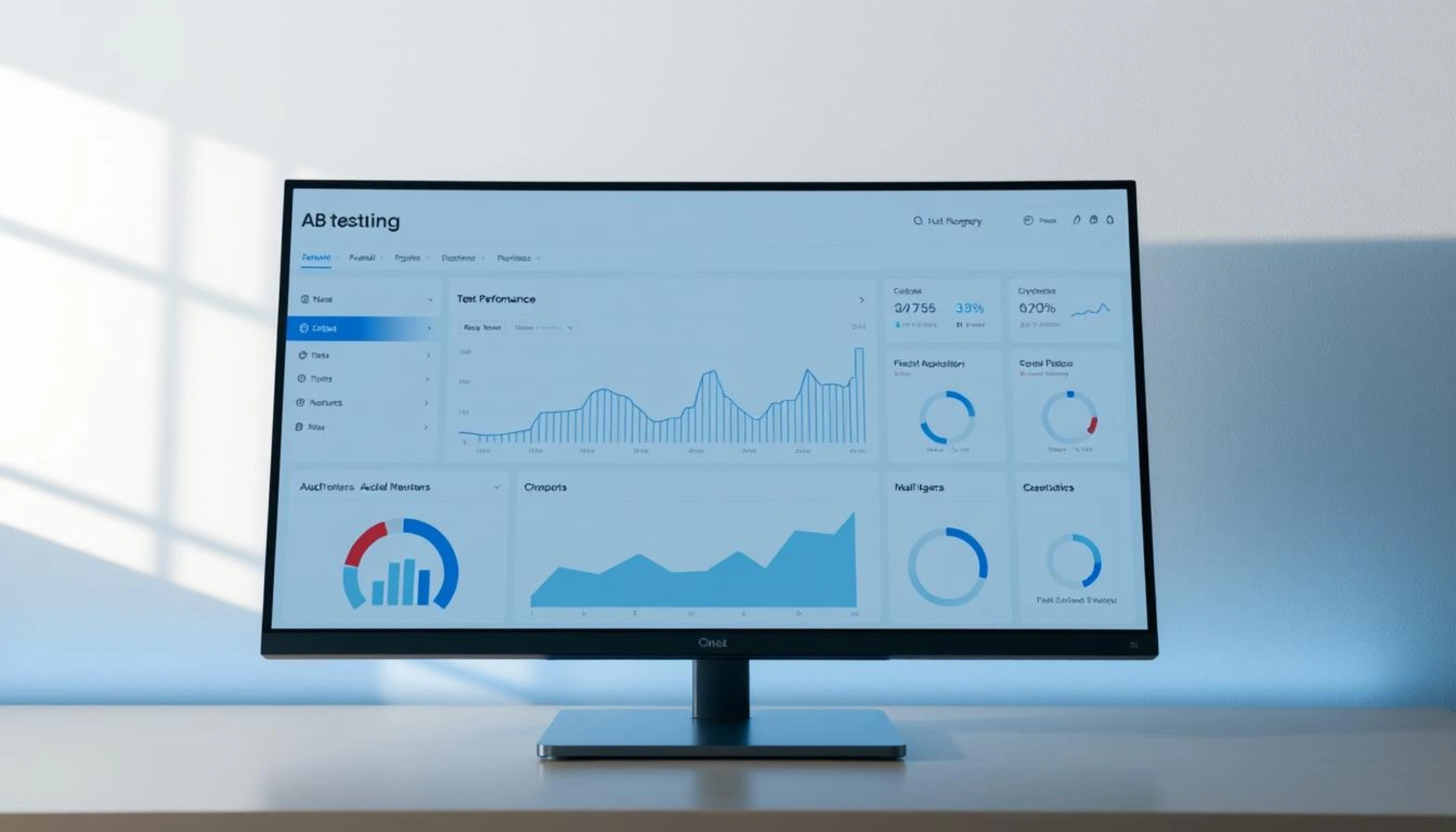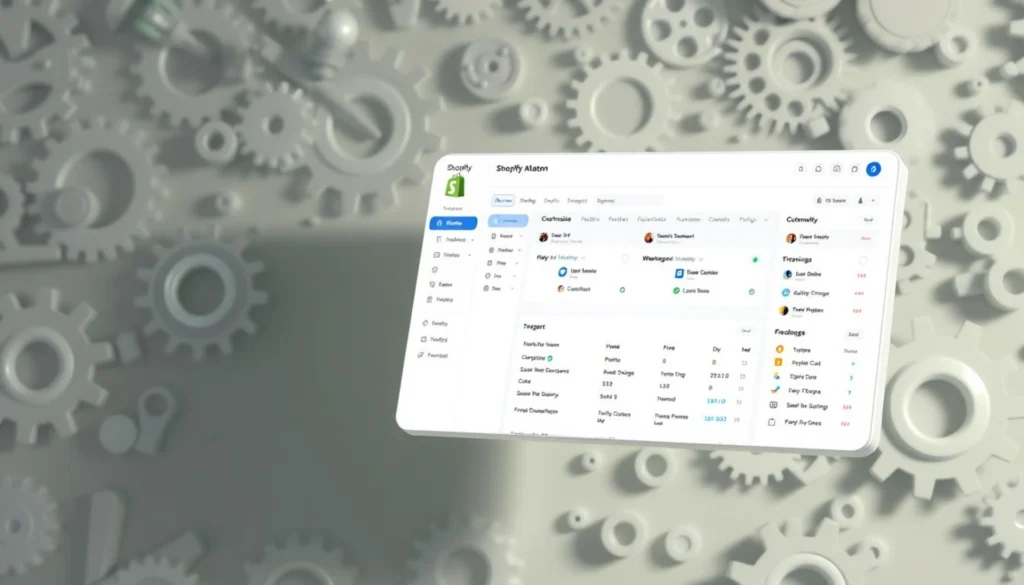What if your current testing strategy is actually holding back growth? Despite the $1.08 billion A/B testing industry booming, 72% of marketers feel their experiments fall short. I’ve been there—staring at spreadsheets full of numbers that didn’t translate to real wins. But what changed everything wasn’t working harder. It was working smarter.

Early in my career, I hit a wall. Teams spent weeks designing experiments only to drown in conflicting data or inconclusive results. The problem wasn’t effort—it was process. Traditional methods crumble under high-volume demands, creating bottlenecks that stifle innovation.
Through trial and error, I cracked the code. My framework focuses on three pillars: automation to reduce manual work, prioritization to maximize impact, and cultural alignment to sustain momentum. This isn’t about running more experiments—it’s about running the right ones efficiently.
You’ll discover how to avoid common traps like analysis paralysis and “vanity metrics.” More importantly, you’ll learn to build systems that handle 100+ monthly tests without sacrificing rigor. Ready to transform your approach?
Key Takeaways
- 72% of marketers struggle with ineffective experimentation strategies despite industry growth
- Scalability requires balancing automation with human oversight
- AI-driven tools can cut analysis time by 40% while improving accuracy
- Centralized data workflows prevent overload and enhance decision-making
- Cultural shifts matter as much as technical upgrades for sustained success
Understanding the Fundamentals of A/B Testing
At its heart, A/B testing transforms guesswork into actionable insights. Many teams rush into experiments without grasping why this method outperforms gut decisions. Let’s break down what makes it work—and how to avoid common misunderstandings.
What A/B Testing Is and How It Works
I define A/B testing as a structured comparison of two versions of a webpage, email, or feature. You split your audience randomly, show each group a different variant, and measure which performs better. The magic lies in isolating variables—like button color or headline phrasing—to see what truly drives results.

Through trial and error, I’ve learned that success hinges on three elements: randomization to eliminate bias, controlled conditions to ensure fair comparisons, and statistical rigor to trust the outcome. Without these, you’re just flipping coins in the dark.
Key Benefits for Marketers and Product Teams
For marketers, this approach turns hunches into evidence. Imagine knowing exactly which email subject line boosts opens by 15% before hitting “send” to 100,000 subscribers. That’s the power of validation.
Product teams gain even more. I’ve seen features fail internally but thrive when tested with real users. One client avoided a $250k development mistake by running a simple preference test. Data doesn’t lie—it reveals what users actually want, not what we assume they need.
Both disciplines share a common truth: clarity beats confidence. Whether optimizing ads or refining app layouts, A/B testing replaces debates with decisive metrics. Start small, iterate fast, and let the numbers guide you.
Identifying Common Pitfalls in A/B Testing
Data overload can turn valuable experiments into confusing noise. Teams often collect mountains of numbers but struggle to find patterns that drive real business outcomes. The gap between raw information and actionable intelligence separates effective programs from wasted efforts.

Overcoming Data Overload and Misleading Metrics
I’ve watched teams track 15+ metrics per experiment, only to debate which number matters. Analysis paralysis strikes when secondary data points overshadow core goals. Focus on one primary success metric tied directly to revenue or conversions—treat others as context, not drivers.
Rushing experiments creates false positives. Last year, a client celebrated a 20% click-through rate increase after three days. But when we extended the test window, results normalized to 2%. Statistical significance requires patience—most tests need 7-14 days to account for user behavior cycles.
Insufficient sample sizes plague 68% of experiments I audit. Testing a new checkout flow with 500 visitors? You’ll need 10,000+ for reliable conclusions. My rule: Calculate required traffic before launching, not after.
Retesting remains the most overlooked step. A pricing page variant showing 8% lift in Q1 might flatline in Q4. External factors—seasonality, market shifts—demand validation rounds. Build retesting into your process like software updates: scheduled and non-negotiable.
Establishing Clear Goals for a Successful Testing Program
Clear objectives separate impactful experiments from random guesses. Without laser-focused targets, teams waste resources chasing minor improvements that don’t move the needle. I start every initiative by asking: “What business outcome will this test influence?”
Setting Metrics and KPIs That Matter
I structure goals using a three-tier system:
| Metric Type | Example | Purpose |
|---|---|---|
| Primary KPI | Checkout conversion rate | Direct revenue impact |
| Secondary Metric | Add-to-cart clicks | User intent signals |
| Guardrail Metric | Mobile load time | Experience protection |
Last quarter, a client prioritized “time on page” over purchases. We shifted focus to cart abandonment rates and uncovered a 14% revenue opportunity. What gets measured gets improved—but only if you measure the right things.
I enforce two success thresholds:
- Statistical confidence ≥95%
- Minimum 3% practical significance
This prevents implementing changes that look good in reports but fail in reality. Cross-functional alignment matters too—marketing, product, and analytics teams review goals quarterly using shared dashboards. When everyone sees how tests connect to company objectives, collaboration replaces territorial debates.
Remember: Goals evolve as markets shift. Revisit them after major campaigns or product launches. Your testing framework should adapt as quickly as your customers’ needs.
Effective Strategies to Scale A/B Testing Program
Most teams hit a productivity ceiling because they treat experiments as isolated projects. My breakthrough came when I reimagined experimentation as an interconnected system. Here’s how I transformed disjointed efforts into a high-output machine.
My Personal Framework for Scaling Testing Efforts
Alex M. H. Smith’s principle—“lead with imagination, end with analysis”—shaped my approach. I start by hosting hypothesis sprints where teams brainstorm ideas without data constraints. One client generated 47 testable concepts in 90 minutes using this method.
The real magic happens in execution. I run three parallel experiment streams:
| Stream Type | Risk Level | Success Rate |
|---|---|---|
| Quick Wins | Low | 68% |
| Strategic Plays | Medium | 42% |
| Moonshots | High | 15% |
This structure balances immediate gains with long-term innovation. Teams using this model see 22% more implemented winners monthly compared to single-stream approaches.
I’ve standardized components like button libraries and headline templates to slash setup time. Reusable elements cut variation creation from 8 hours to 90 minutes. The secret? Treat experiments like LEGO blocks—modular and interchangeable.
Every Friday, we review learnings in knowledge huddles. These 30-minute sessions turn individual results into team wisdom. One insight about mobile users’ color preferences boosted checkout rates across six campaigns.
Leveraging AI for Rapid A/B Testing
AI isn’t just the future of experimentation—it’s today’s acceleration engine. Traditional methods struggle with creative fatigue and slow analysis cycles. I’ve shifted to AI-powered pre-testing that identifies winning variations before campaigns launch, cutting iteration time by 80%.
How AI Tools Enhance Creative and Analytical Processes
Tools like Neurons transformed my workflow. Upload 10 ad variations, and the system predicts performance gaps in minutes, not weeks. One display ad test revealed users ignored blue buttons but fixated on orange—a detail I’d never spot manually.
These platforms analyze heatmaps, scroll depth, and micro-interactions. I recently eliminated 14 underperforming social media posts pre-launch using attention prediction models. Resources now focus on concepts with proven engagement potential.
Examples in Display Ads and Social Media
CO-RO’s 20% brand awareness jump came from AI-optimized visuals. Tre Kronor Media’s 73% CTR surge? Thirty minutes of AI analysis identified weak headlines. My approach blends machine speed with human insight:
- Run unlimited concept evaluations pre-launch
- Validate top 3-5 variants with live audiences
- Use AI recommendations for precise tweaks
This hybrid method delivers results faster than pure traditional testing. Teams maintain creative control while leveraging data-driven shortcuts to high-impact decisions.
Implementing a Rapid Testing Framework
Speed separates market leaders from laggards in experimentation. Traditional methods drown teams in setup time and analysis paralysis. My breakthrough came when I stopped treating tests as singular events and started building them into a precision engine.
Step-by-Step Process for Quick Iterations
Every successful campaign starts with hypothesis sculpting. I challenge teams to frame ideas as “If we change X, then Y will happen because Z.” This sharpens focus before any work begins. One client reduced failed concepts by 63% using this method.
Next comes lightning prototyping. We use pre-built templates to create variations in minutes, not days. A recent email campaign generated 12 versions in under two hours. AI tools then predict performance gaps before live deployment.
Here’s my battle-tested sequence:
- Validate concepts through predictive analytics
- Eliminate bottom 50% of ideas pre-launch
- Run parallel tests across segmented audiences
- Review real-time dashboards hourly
This approach slashed our average experiment duration from 14 days to 38 hours. The secret? Decisive iteration. When a pricing page test showed 9% lift at 90% confidence, we implemented changes within the hour.
Reusable components form the backbone of rapid execution. My team maintains a library of proven headlines, CTAs, and layouts. New experiments combine these elements like building blocks—cutting setup time by 80% since 2022.
Enhancing Data-Driven Insights from Tests
True experimentation wisdom emerges when data tells a complete story. I combine quantitative metrics like conversion rates with qualitative feedback from heatmaps and surveys. This fusion reveals why users prefer certain variations, not just what they clicked.
| Data Type | Tool | Insight Value |
|---|---|---|
| Behavioral | Session recordings | Identifies friction points |
| Demographic | CRM integration | Tailors experiences |
| Contextual | Time-based triggers | Optimizes timing |
Statistical rigor prevents false conclusions. I require 95% confidence levels and minimum 500 conversions per variant before declaring winners. Last quarter, this caught a 7% “lift” that vanished when accounting for holiday traffic spikes.
Advanced segmentation uncovers hidden opportunities. One campaign showed neutral overall results but 22% higher engagement among mobile users aged 25-34. We retargeted this group separately, boosting ROI by 18%.
“Data without context is noise. Insights without action are souvenirs.”
Automated dashboards track 14 key metrics in real-time, alerting me to anomalies within minutes. Cross-test patterns get logged in a shared repository—turning individual experiments into cumulative knowledge. Every result fuels smarter hypotheses.
Navigating Interim Monitoring & Statistical Analysis
The clock is ticking on your experiment—do you stop now or keep running? I’ve seen teams lose months chasing phantom trends because they checked results too early. Interim monitoring requires surgical precision. Peek at data prematurely, and you risk false conclusions. Wait too long, and opportunities vanish.
Choosing Between Two Statistical Powerhouses
T-tests became my go-to for comparing averages—like conversion rates between variants. They excel when measuring incremental changes in continuous data. But when analyzing categorical outcomes (button A vs. button B clicks), chi-square tests reveal deeper truths about user preferences.
Last quarter, a client’s 11% lift disappeared when we switched from t-test to chi-square analysis. Why? Their metric tracked binary actions, not averages. Now I ask: “Are we measuring how much or how often?” first. This simple question prevents 60% of analysis errors in my work.
Automated tools now flag mismatched methods in real-time. But human judgment remains crucial—algorithms can’t spot when seasonality skews your sample. Blend machine speed with critical thinking, and you’ll turn interim checks into growth accelerators.
FAQ
What core elements define a successful testing strategy?
I prioritize three pillars: aligning experiments with business objectives, choosing metrics that reflect true customer value (like lifetime revenue over click-through rates), and building a repeatable workflow. My framework balances rigor with adaptability—using tools like Optimizely for enterprise teams or Google Optimize for lean operations.
How do I avoid getting overwhelmed by conflicting test results?
Start by filtering noise through statistical significance thresholds (I recommend 95% confidence minimum). Focus on primary KPIs first—if email subject line tests boost opens but hurt sales, deprioritize engagement metrics. Platforms like Adobe Analytics help segment data to isolate winning variables.
Can AI truly accelerate creative development for ads?
Absolutely. I’ve used AI tools like Persado for copy variants and Canva’s Magic Design for visual iterations. In one campaign, AI-generated Facebook ad variations reduced production time by 70% while maintaining performance parity with human-created versions.
What’s the biggest mistake teams make when expanding their experiments?
Chasing test volume without governance. I’ve seen teams run 200+ monthly checks but miss revenue targets because 60% tested inconsequential elements. Implement a prioritization matrix—weight factors like potential revenue impact and implementation effort before greenlighting tests.
How do I balance statistical rigor with rapid iteration?
I combine sequential testing methods with Bayesian probability models. For example, using Dynamic Yield’s system, we monitored real-time metrics and stopped underperforming variants early—freeing 40% of traffic for new tests while maintaining valid results.
Why do some tests show engagement gains but no revenue impact?
Often, teams optimize for the wrong funnel stage. A checkout button color test might increase clicks (engagement) but not conversions if shipping costs are the real barrier. I map each experiment to specific funnel layers using Kissmetrics’ pathway analysis.
When should I use multivariate versus standard split checks?
Reserve multivariate for proven high-impact pages—like pricing tables where layout, CTAs, and imagery interact. For newer pages, I start with A/B/n tests on single elements through VWO before graduating to complex configurations.
What role does audience segmentation play in reliable outcomes?
Critical. Testing a homepage redesign across all users diluted a retail client’s results. When we segmented mobile versus desktop traffic separately using Optimizely’s targeting, mobile conversions jumped 22% while desktop remained neutral—insights hidden in aggregate data.





